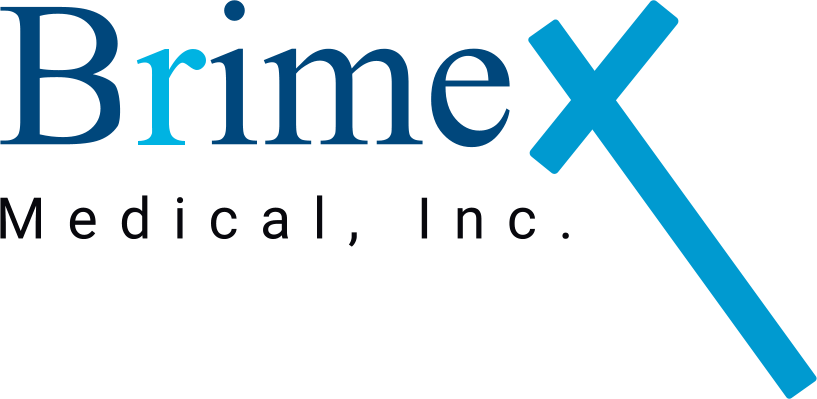Attention Deficit Hyperactivity Disorder (ADHD) features challenges with attention, hyperactivity, and impulsivity. While it’s a neurodevelopmental condition that can affect each person differently, many people with ADHD find it difficult to stay focused on tasks, recall responsibilities that are “out of sight, out of mind,” and stay organized. Using a planner for ADHD can be a practical tool to improve productivity, focus, and goal completion.
In this blog post, we will explore simplified ways to use a planner effectively, tailored for individuals with ADHD. Whether you struggle with time management, task prioritization, or keeping track of daily activities, this guide will provide practical tips to help you regain control and live more confidently. Additionally, Brimex Medical, Inc. offers comprehensive intellectual or developmental disability support services that help patients find their rightful place in the community, fostering inclusivity and empowerment.
Benefits of Using a Planner with ADHD
Planners, whether in digital or paper form, are helpful for anyone looking to improve their organization, but they offer particular benefits for those living with ADHD. They help you structure your day, remind you of tasks, and break down overwhelming projects into manageable steps. Below are some ways planners can be especially beneficial for those with ADHD:
- Boosts Productivity and Goal Completion
- A planner allows you to map out your day, week, or month. It can help you set and track specific goals, making it easier to accomplish them. For individuals with ADHD, who may struggle with impulsivity and distraction, having tasks laid out step-by-step can be a game-changer.
- Practical Tip: Break down larger tasks into smaller, more manageable pieces. Instead of writing “clean the entire house,” write specific tasks like “vacuum living room” or “wash dishes.” This makes the task feel less overwhelming and more achievable.
- Provides Visual Roadmap to Goals
- Visual aids are incredibly effective for people with ADHD. A planner provides a clear visual representation of your goals, breaking down large projects into steps and creating a roadmap to follow. This makes it easier to prioritize tasks and see your progress, motivating you to stay on track.
- Example: If you’re working on a long-term project, like writing a report, use your planner to outline each stage—research, draft, revision—allocating specific days for each task. This way, the project feels more manageable, and you are less likely to procrastinate.
- Reduces Overwhelm and Anxiety
- ADHD can often lead to feelings of being overwhelmed due to the sheer number of tasks that need to be done. A planner can help by organizing these tasks into smaller steps, reducing the stress and anxiety that comes with trying to keep everything in mind at once.
- Practical Tip: Dedicate one section of your planner to a “brain dump” where you jot down everything on your mind. Later, categorize these tasks and schedule them in your planner. This helps clear your head and organizes your thoughts.
- Helps with Time Management
- Time blindness, or the inability to gauge how much time has passed, is a common symptom in ADHD. Planners can be particularly effective in combating this. Many digital planners come with built-in timers, which can help remind you of how long a task should take and when it’s time to move on.
- Brimex Medical, Inc. Support: Our intellectual or developmental disability services offer guidance on using tools like planners to enhance time management skills, helping our patients find structure and stability in their daily lives.
How to Effectively Use a Planner If You Have ADHD
Effectively using a planner means working with your individual preferences and ADHD tendencies. Here are some simplified strategies to get the most out of your planner:
- Pick a Planner You’ll Enjoy
- Choose a planner that suits your personality. If you enjoy bright, colorful designs, look for a planner with vibrant pages. If digital platforms appeal to you more, consider apps that allow for customization, reminders, and alarms. The key is to pick a system that you’ll be motivated to use regularly.
- Example: Digital planners like Google Calendar or Trello can offer flexibility and convenience with features like alerts and recurring tasks. Alternatively, a paper planner with stickers and markers can make planning feel more engaging and creative.
- Prioritize Your Goals
- Not all tasks are created equal. To effectively use your planner, start by listing out your short-term and long-term goals. Rank them in order of priority and allocate time for each based on its importance. This ensures that essential tasks are completed first, and you avoid the stress of last-minute deadlines.
- Practical Tip: At the beginning of each day or week, write down your top three priorities. This will help you focus on what truly matters and prevent you from getting sidetracked.
- Avoid Micromanaging Your Schedule
- It might be tempting to plan out your day minute by minute, but this can often backfire, especially if you have ADHD. Over-scheduling can lead to increased anxiety and make it difficult to stick to your plan if something doesn’t go as expected. Instead, give yourself some flexibility.
- Brimex Medical, Inc. Support: Our services aim to teach effective planning techniques that are practical and reduce pressure, helping individuals manage their time and responsibilities without feeling overwhelmed.
- Use Blocks of ‘Focus Time’
- Instead of scheduling each task individually, consider setting blocks of time for different categories of activities, such as “work,” “chores,” or “self-care.” This way, you can switch tasks within that category without feeling restricted, but still stay on track.
- Example: Allocate “focus time” from 9 AM to 11 AM for work-related tasks. During that period, you can decide whether to answer emails, draft reports, or attend meetings based on your mood and energy levels.
- Track How Long Tasks Actually Take
- Since time perception can be tricky for people with ADHD, it’s helpful to record how long tasks typically take you. This allows you to better plan your time in the future and prevents under- or over-estimating how much you can accomplish in a day.
- Practical Tip: If you notice a specific task consistently takes longer than expected, try setting a timer. Break it down into 25-minute intervals (the Pomodoro technique), with short breaks in between, to help manage your focus and energy.
- Break Down the Steps
- Large tasks can feel overwhelming and may lead to procrastination. Breaking tasks into smaller, manageable steps makes them easier to tackle, and checking off completed steps can provide a sense of accomplishment and motivation.
- Example: Instead of writing “launch a website” in your planner, break it down into smaller tasks like “research hosting services,” “purchase a domain name,” and “design the homepage.” You’ll feel a sense of progress as you complete each step.
- Spread Steps Out if Necessary
- If a task or project is particularly daunting, spread it out over several days or weeks. This gives you time to complete smaller parts without feeling pressured to finish everything at once.
- Brimex Medical, Inc. Support: We teach our patients how to effectively break down and spread out tasks, offering personalized strategies to improve organization and focus, fostering a sense of achievement and confidence.
Additional Organization Tips for ADHD
While a planner is a helpful tool, there are other methods that can complement it to boost productivity and organization:
- Set Up Assigned Locations for Items
- Label bins and containers for easy access and storage. This helps prevent clutter and makes it easier to find things when you need them.
- Utilize Automatic Billing and Paperless Services
- Automate as many tasks as possible to reduce the mental load of remembering to pay bills or sort paperwork.
- Use Sticky Note Reminders in High Visibility Areas
- Place sticky notes on your fridge, desk, or bathroom mirror as reminders of important tasks or appointments.
- Turn Mundane Tasks into Games
- Challenge yourself to beat your “speed record” when doing repetitive chores like vacuuming or folding laundry.
- Color-Code Tasks Based on Priority
- Assign different colors for high, medium, and low-priority tasks. This visual cue helps you quickly see what needs immediate attention.
Conclusion
Using a planner can be a powerful tool for those with ADHD, providing structure, reducing overwhelm, and enhancing productivity. It allows you to prioritize, break down tasks, and create a clear path to success. By following the strategies mentioned above, you can work with your individual ADHD tendencies, rather than against them, to achieve your goals.
Brimex Medical, Inc. is committed to supporting individuals with intellectual or developmental disabilities, offering comprehensive services that help our patients find their rightful place in the community. Whether through planning strategies or other support services, our goal is to empower individuals to live fulfilling and successful lives.




